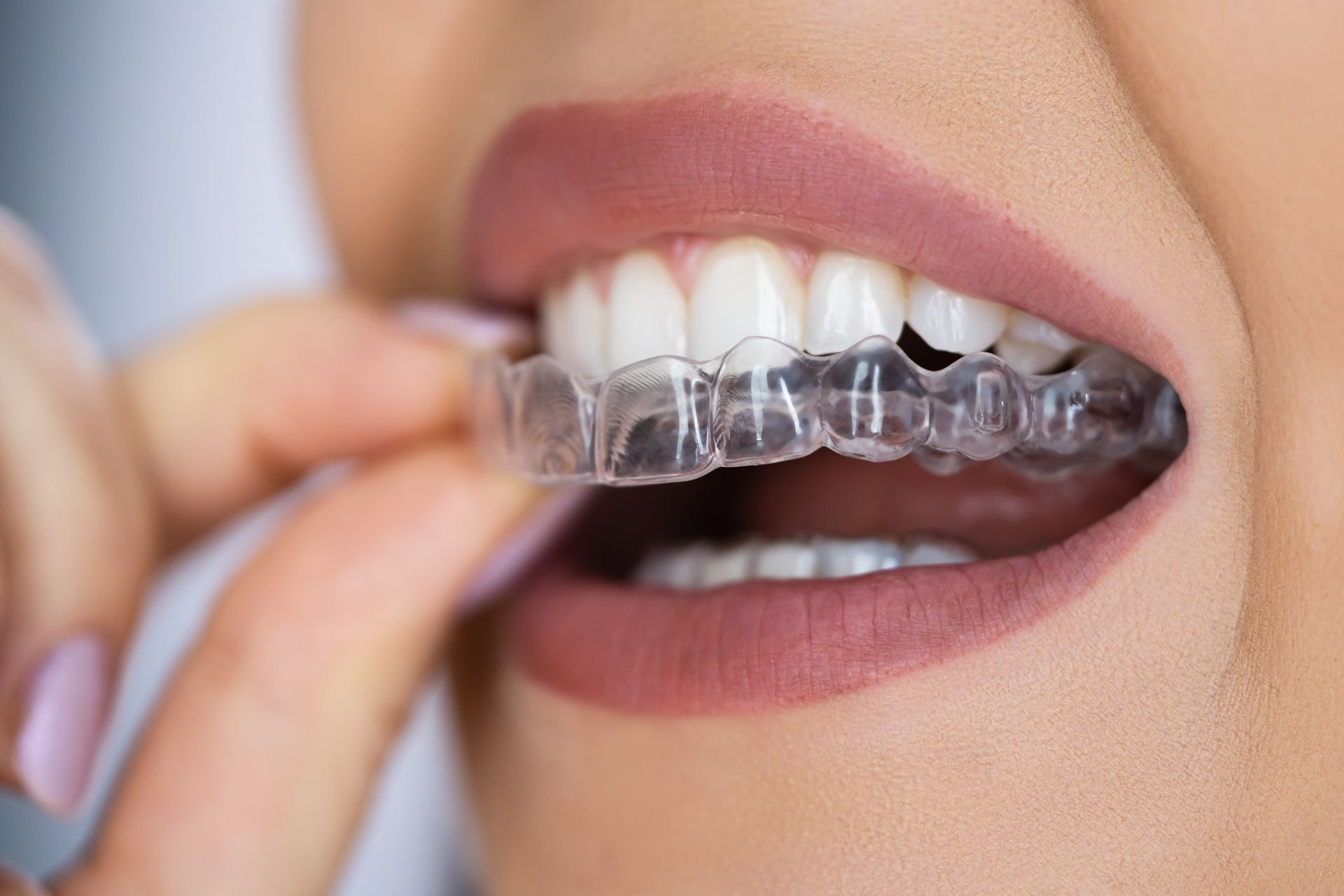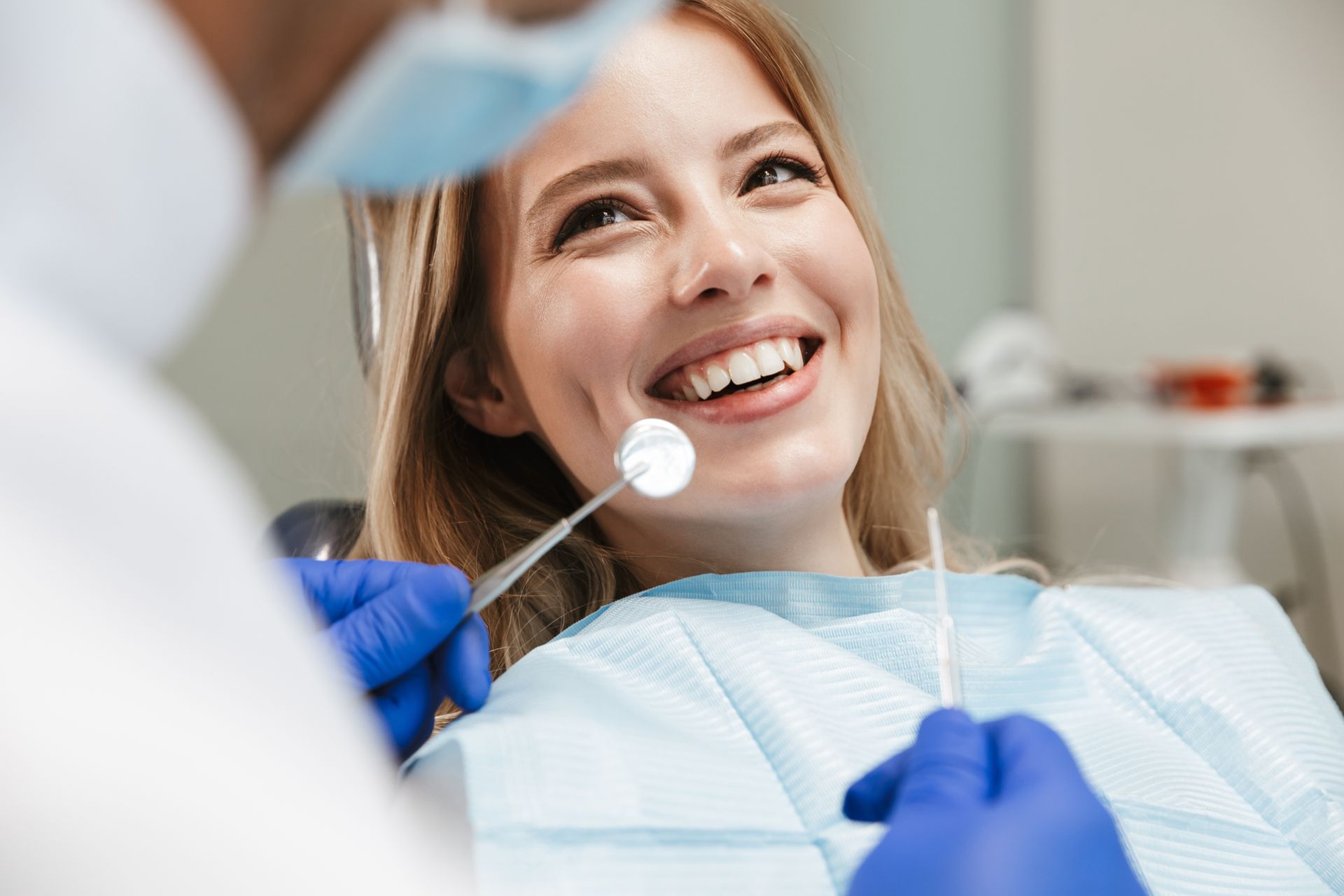Bruxism
Bruxism - What is it?
Bruxism is characterized by involuntary and repetitive muscle activity in the muscles responsible for chewing, which leads to teeth being clenched or grinded in a harmful way.
Bruxism can occur both awake and at night during sleep. Waking bruxism is thought to be mainly related to psychosocial factors such as stress, anxiety and depression. It should be noted that habits such as biting nails, biting pencils, clenching the jaw and biting the tongue or cheek are also considered forms of waking bruxism.

As for bruxism during sleep, for a long time it was only associated with the same psychosocial issues. However, it is now known that there is a huge link between sleep cycle disorders and bruxism.
Changes in the central nervous system or even the consumption of certain medications and narcotics can influence the development of this pathology.
Possible symptoms caused by bruxism
Tension
or Pain
Many patients are unaware that they grind their teeth and are usually alerted by others, but as a result of the involuntary nocturnal movements they often feel muscle tension or even pain when they wake up, both in the face and in the neck.
Tooth sensitivity or even small lesions inside the mouth are also common symptoms.
Temporomandibular Joint Dysfunction (TMJ Dysfunction)
Although TMJ dysfunction (temporomandibular joint, responsible for connecting the temporal bone to the lower jaw) can have different origins, it is true that Bruxism is often the condition that triggers the dysfunction, aggravating it and making it more difficult for the joint, which is responsible for connecting the temporal bone to the lower jaw. The most common symptoms include pain or clicking in this area, limitations in opening and closing the mouth and headaches.
Dental Wear
and Fractures
The strong pressure exerted by involuntary movements causes wear and tear on dental parts and, in extreme cases, can even lead to the fracture of teeth or restorations.
Bruxism Treatment
When it comes to treatment, bruxism is a clinical condition for which there is still no cure, but there are ways of trying to control and soften it. The main approach is to make the patient aware of this phenomenon, trying to understand potential underlying causes. Some common approaches to treating or controlling the consequences of bruxism are:
Sleep hygiene
Establish a regular sleep routine and create an environment conducive to resting the body and mind. Avoid stimulants before bedtime, such as electronic devices or very heavy meals, alcohol and caffeine. A quiet, dark environment in the bedroom should be ensured, with sufficient and routine rest times.
Relaxation therapies
Relaxation techniques such as meditation, deep breathing and muscle stretching exercises can help reduce the stress and muscle tension associated with bruxism.
Physiotherapy:
In cases where muscle and joint symptoms are already present, physiotherapy is a strong ally. It can be very effective in reducing/eliminating pain and improving jaw mobility.
Medication
In some extreme cases, and on a temporary basis, anti-inflammatory medication or muscle relaxants can be prescribed to relieve pain, muscle tension and inflammatory processes. However, the use of medication should always be closely monitored by the doctor to avoid the risk of additional problems.
Lifestyle changes
Reducing stress and anxiety through sports, relaxation therapies or even psychotherapy are essential. Patients must become aware of the consequences of bruxism and understand their role in controlling teeth clenching, especially during the day. They should routinely create moments of downtime and relaxation in which they check whether they are establishing contact between their teeth and stop doing so immediately. For this purpose, there are cell phone applications that issue warnings at set intervals for the patient to unclench their teeth. Reducing/eliminating the consumption of alcohol, caffeine or stimulating substances can also help treat bruxism.
Myorelaxant splints
These are removable, temporary devices made by the dentist from molds of the patient's mouth, so that they fit on the upper or lower teeth. Their purpose is to establish a close-to-ideal relationship between the upper and lower teeth and to lengthen certain chewing muscles. This reduces friction between the teeth and consequent muscle strain, protecting the teeth from tooth wear and the muscles and joints from overload during clenching.
Our Clinical Team is here to help you!
Agreements and Partnerships
FAQ's
1. What are the main causes of bruxism?
Bruxism is a multifactorial condition whose causes are difficult to isolate and can vary from person to person. Some of the most common causes include: stress, anxiety, dental malocclusion problems, sleep disorders, and even the ingestion of certain medications or other stimulating substances. Identifying the underlying cause is key to effective treatment.
2. What are the long-term consequences if bruxism is left untreated?
In addition to the immediate symptoms, such as jaw pain and tooth wear, untreated bruxism can lead to more serious long-term complications with an impact not only on oral health, but also risks to health in general. One of the main consequences is a disorder of the temporomandibular joint, resulting in symptoms such as difficulty opening or closing the mouth, jaw clicking and pain in the joint area. The chronicity of these signs, together with the overload caused by teeth clenching, can exceed the joint's capacity to resist and initiate degenerative and disabling processes. On the other hand, premature tooth wear causes teeth to lose their natural resistance, leading to increased tooth sensitivity and fractures, sometimes irrecoverable, with the eventual loss of teeth. The destruction of dental anatomy and the loss of some teeth, compromising patients' chewing efficiency and phonetics. Facial changes with a more square, aged or even asymmetrical appearance of the face can be other consequences of this condition.
3. How can I tell if I suffer from bruxism?
It's not always easy to identify bruxism, as it often occurs during sleep and without the patient realizing it. It is therefore essential to pay attention to the reports of third parties and the appearance of signs or symptoms associated with this condition. At MALO CLINIC it is also possible to carry out a polysomnography test. This test is carried out at home by the patient and, through the use of sensors, assesses the quality of sleep and the relationship with tooth clenching, making it essential for a correct diagnosis.
Our Clinical Team is here to help you!







